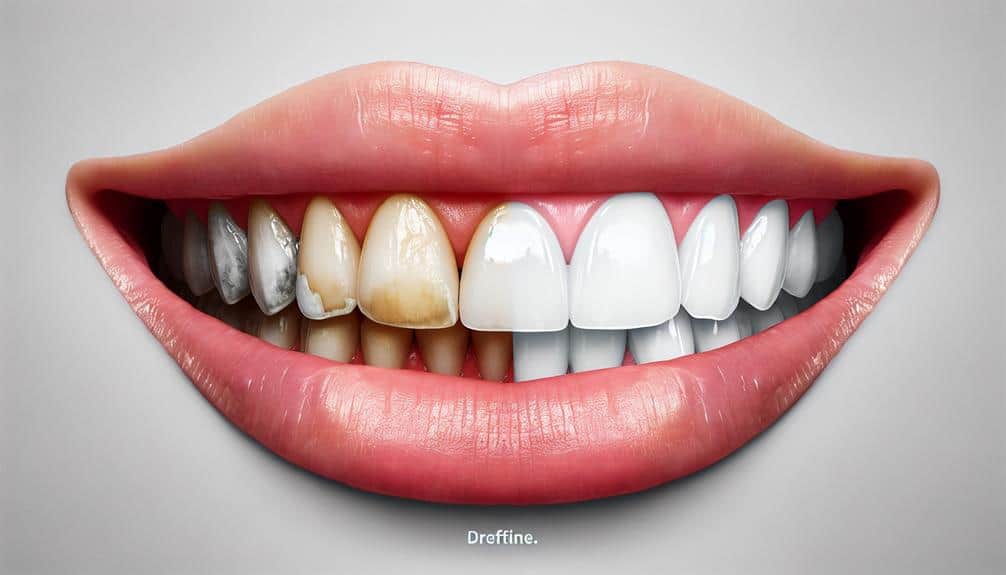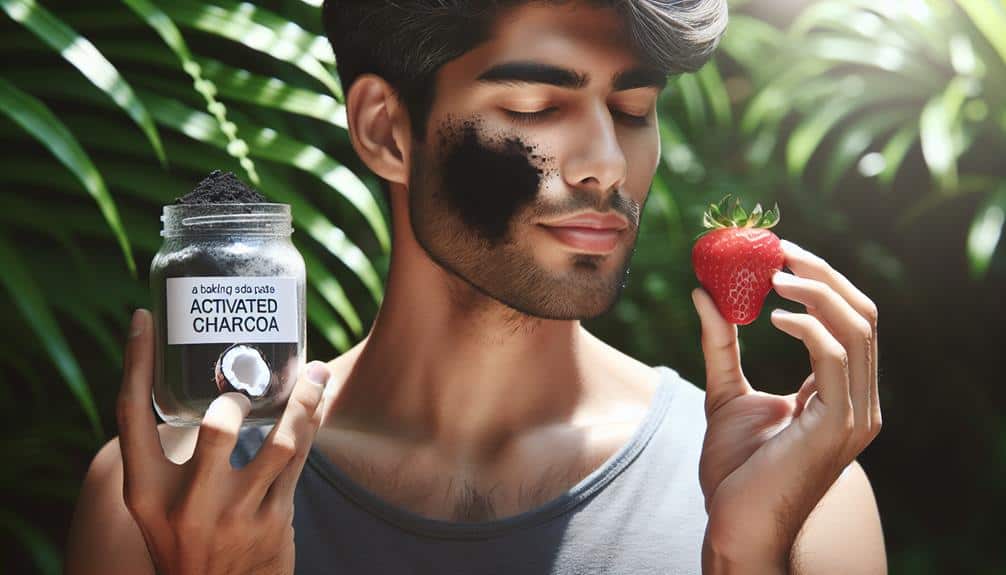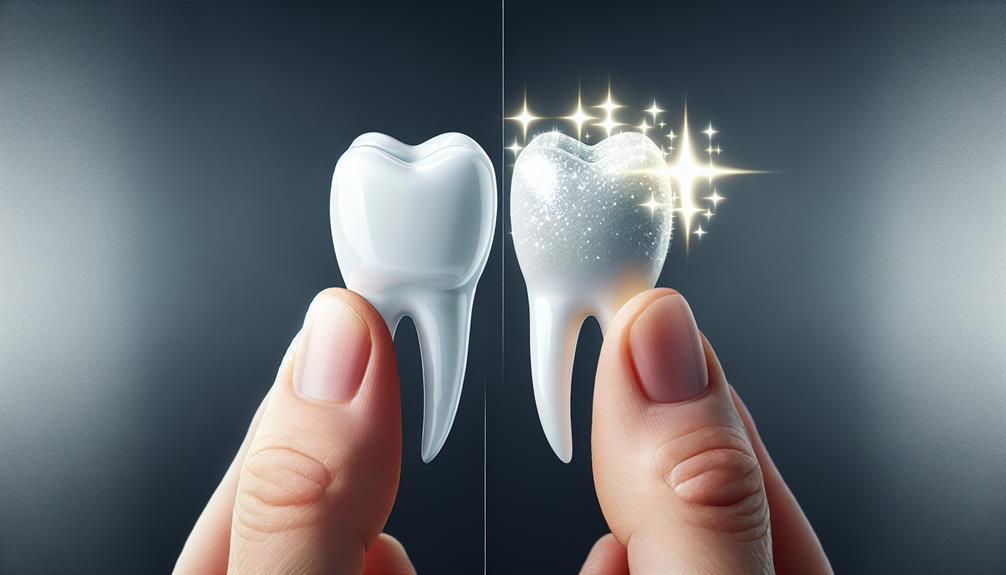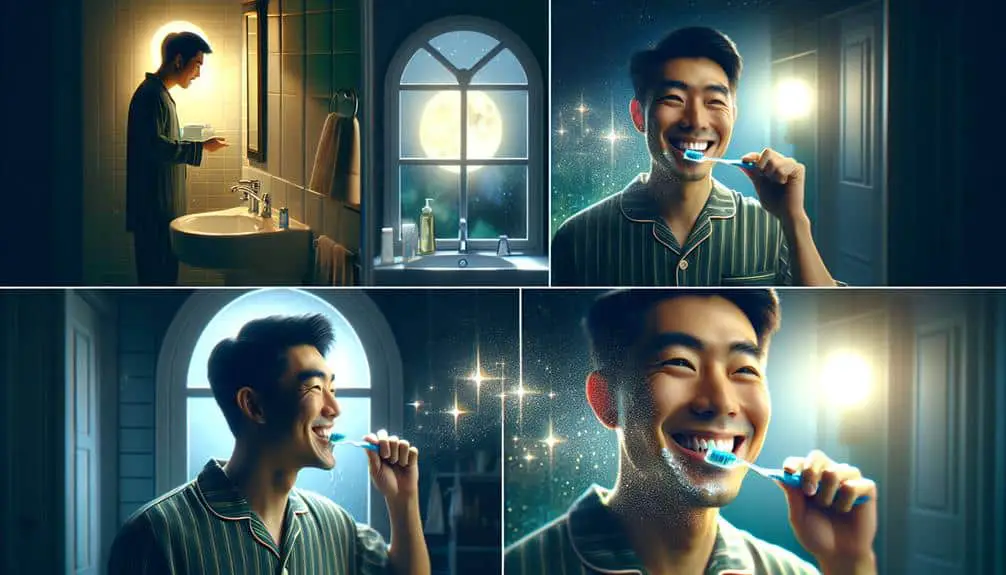Stubborn stained teeth resist whitening because the discoloration goes deep into the enamel and affects the dentin underneath. Traditional whitening methods may struggle to fully eliminate these stubborn stains. Professional treatments or lifestyle changes could be more effective in dealing with this type of deep-seated discoloration.
Key Points
- Stubborn stains are deeply embedded in enamel, requiring stronger whitening agents.
- Genetics and lifestyle habits influence enamel thickness and staining resistance.
- Intrinsic stains within the tooth structure are challenging to bleach effectively.
- Some stains may be resistant due to age-related enamel thinning and dentin exposure.
- Professional treatments like laser whitening or bonding may be needed for stubborn discoloration.
Common Causes of Stubborn Stains
Stubborn stains on teeth are primarily caused by long-term exposure to dark-colored foods and beverages, such as coffee and red wine, which can penetrate the enamel over time. Your dietary habits play a significant role in the staining of teeth. Foods like berries, soy sauce, and curry contain pigments that can adhere to the enamel, leading to discoloration. Genetics also play a part in how prone you're to developing stains; some people naturally have thicker enamel that resists staining, while others may have thinner enamel that stains more easily.
Smoking is another major contributor to stubborn stains on teeth. The tar and nicotine in tobacco products can discolor teeth rapidly, causing deep-seated stains that are challenging to remove. Additionally, as you age, the enamel on your teeth naturally wears down, exposing the dentin underneath, which is more yellowish in color. This natural aging process can make your teeth more susceptible to staining over time.
Understanding Enamel and Staining
Long-term exposure to dark-colored foods and beverages can lead to stains on teeth by penetrating the enamel, causing discoloration that may be influenced by genetic factors and lifestyle habits.
Enamel, the outermost layer of the tooth, plays an important role in protecting the inner structures. It's the hardest substance in the human body, but it isn't impervious to staining. Enamel protection is essential for maintaining a bright smile.
Stain prevention involves good oral hygiene practices, such as regular brushing and flossing, to remove plaque buildup that can harbor staining agents. Additionally, limiting the consumption of stain-causing foods and beverages can help preserve enamel integrity.
Acidic foods and drinks can weaken enamel, making it more susceptible to staining. Understanding the relationship between enamel and staining is crucial in managing and preventing tooth discoloration.
Professional Whitening Options
When considering professional whitening options, consulting with a dental professional can provide valuable insights into the most effective treatments for stubborn stained teeth. At-home treatments such as bleaching trays offer convenience but may not provide the same level of whitening as in-office procedures.
Bleaching trays are custom-fitted to your teeth and filled with a whitening solution for a specified amount of time each day. However, the concentration of whitening agents in these solutions is lower than those used in professional settings.
For more severe staining, laser whitening and in-office procedures are recommended. Laser whitening involves the use of a laser to activate the whitening agent on your teeth, speeding up the bleaching process for quicker results. In-office procedures often use stronger whitening agents that can penetrate deeper into the enamel, targeting stubborn stains more effectively.
These treatments are supervised by dental professionals to ensure safety and optimal results. Consulting with your dentist will help determine the most suitable professional whitening option for your specific needs.
Lifestyle Changes for Whiter Teeth
To enhance the whiteness of your teeth, implementing certain lifestyle changes can be beneficial in improving your overall oral health and appearance. Making specific modifications in your diet and prioritizing excellent oral hygiene practices can have a notable impact on the brightness of your smile. Here are some evidence-based recommendations for achieving whiter teeth:
- Diet Modifications: Consuming foods rich in calcium such as dairy products and leafy greens can help strengthen enamel, the outer layer of your teeth, making them less prone to staining. Additionally, reducing the intake of sugary and acidic foods can prevent enamel erosion and discoloration.
- Oral Hygiene: Brushing your teeth at least twice a day with fluoride toothpaste, flossing daily, and using mouthwash can help remove surface stains and prevent plaque buildup, which can contribute to yellowing of teeth over time.
- Habits and Self-Care: Avoiding tobacco products and excessive consumption of dark-colored beverages like coffee and red wine can prevent extrinsic staining, preserving the whiteness of your teeth.
Dealing With Intrinsic Stains
For effectively addressing intrinsic stains on your teeth, professional dental treatments such as bleaching or bonding may be recommended by your dentist after a thorough examination of your oral health. Intrinsic stains are discolorations that occur within the tooth structure, making them more challenging to remove compared to extrinsic stains that are on the surface. Bleaching treatments utilize peroxide-based agents to penetrate the enamel and target the discolored molecules within the tooth. Bonding, on the other hand, involves applying a tooth-colored resin to cover the stained areas.
It's important to note that while these treatments can be effective in stain removal, the success rate may vary depending on the severity and cause of the tooth discoloration. Your dentist will assess the nature of your intrinsic stains to determine the most suitable approach for achieving a whiter smile. Additionally, maintaining good oral hygiene practices and attending regular dental check-ups can help prevent new stains from developing and prolong the results of professional treatments.
Frequently Asked Questions
Can Genetics Play a Role in the Stubbornness of Stained Teeth?
Genetic factors can indeed influence the stubbornness of stained teeth, impacting how well they respond to whitening treatments. Additionally, lifestyle habits such as smoking and certain dietary choices can exacerbate the severity of stains, making them more resistant to whitening efforts.
Are There Any Natural Remedies That Can Help Whiten Stubborn Stains?
Explore dental dilemmas with DIY methods. Search for natural remedies for stubborn stains. Some recommend baking soda with strawberries or coconut oil pulling. Remember, results vary; consult dental professionals for guidance on whitening woes.
How Long Does It Typically Take to See Results From Professional Whitening Treatments?
For professional whitening treatments, results can vary. Typically, you may notice improvements after just one session. A full treatment timeline ranges from 1-3 weeks. To maintain results, avoid staining beverages and practice good oral hygiene.
Can Certain Medications Contribute to the Resistance of Whitening Stubborn Stains?
Certain medications can impact the resistance of stubborn stains to whitening. Additionally, genetic influences play a role in how effective whitening treatments can be. Understanding these factors can help tailor solutions for best results.
Are There Any Long-Term Consequences of Having Stubborn Stained Teeth, Even After Attempting Various Whitening Methods?
So you've tried all the whitening methods but those stains won't budge? Long-term effects of stubborn stained teeth include self-confidence issues and potential lifestyle changes. Consult your dentist for personalized advice.
Conclusion
To sum up, stubborn stained teeth can be resistant to whitening due to deep-rooted discoloration caused by intrinsic factors. Like trying to scrub away graffiti on a brick wall, sometimes the stains are embedded too deeply to be easily removed.
Understanding the root cause of your staining is key to finding the most effective whitening solution. Don't lose hope – with the right professional treatment and lifestyle changes, you can still achieve a brighter, more confident smile.



